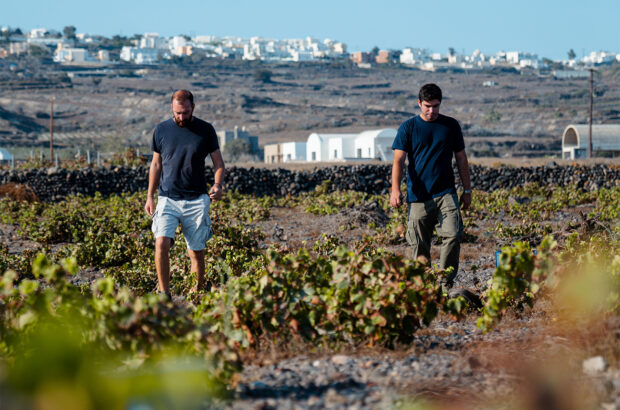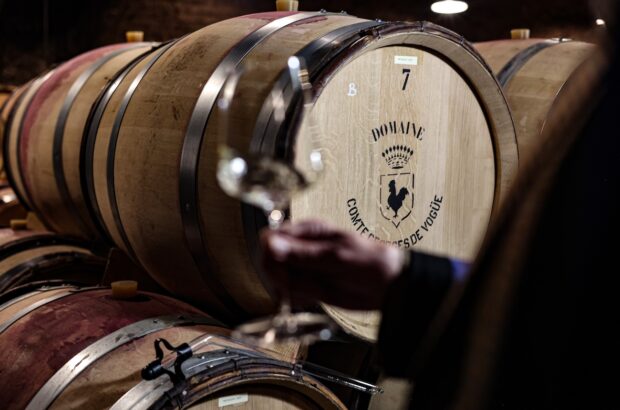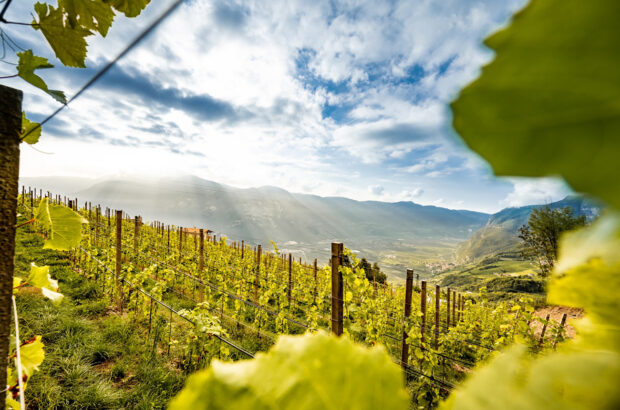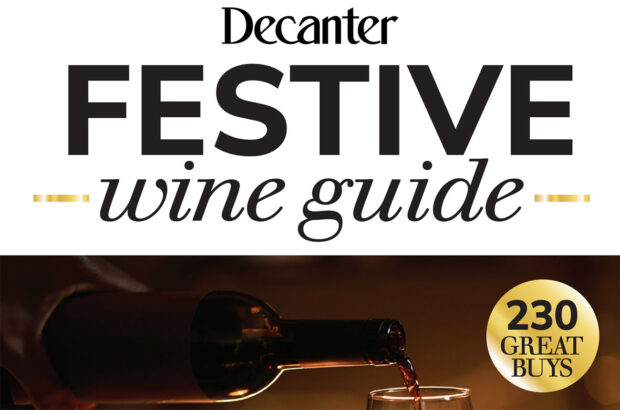There are many terms for wine barrels in the many languages of wine. Whether called a ‘barrique’, ‘cask’, ‘foudre’, or ‘botte’, these terms refer to wooden vessels that both store and shape the wines within them. Wine barrels are used to create specific results: from fermentation to élevage the barrel makes an impact on the finished wine. Here’s a deep dive into why different barrels are used, from size to place of origin, and what each might impart. It also includes a quick guide to commonly used barrel sizes.
What is a wine barrel?
A wine barrel is the most common wooden vessel in modern-day winemaking. Evidence of barrel use dates to Egyptian times, with a wall painting that dates to 2600BC of a barrel being used for wheat. There is also evidence of barrels used for storing wine in ancient Babylon, Iron Age Britain, Gaul and ancient Rome.
Typically cylindrical in shape, a barrel consists of multiple parts. They are assembled by coopers, who build and toast the barrels for wineries.
Parts of a wine barrel:
Staves: The staves are the long wooden planks that make up the barrel’s body. Depending on the cooper, there are generally between 28 and 32 staves in a typical 225-litre barrel.
Hoops: Hoops have been made of shaped or bent wood in the past, but in most modern instances are made of steel or aluminium. The hoops typically go around the staves, holding them in place. There are usually between six and eight hoops on a standard barrique barrel, depending on the cooper.
Heads: The heads are the circular part of the barrel at either end. They are made from staves and cut to fit each barrel using a tongue-in-groove method to hold them in place.
Bung and bunghole: The hole used to fill and empty the barrel as well as access the wine, for battonage or fining, is called the bunghole, unfortunately. The plug, typically made of silicone in modern winemaking, is called the bung.
Size matters
The size of a barrel is about more than just volume. The amount of surface area that comes in contact with the wood impacts the wine in different ways.
Smaller barrels (typically 225-300 litres):
- Smaller barrels tend to show much greater barrel influence on the wine inside them, given the higher ratio of wine surface area to the barrel. This can include a significant presence of wood flavours and aromas, particularly in newer barrels. These may include vanilla, caramel or spice notes in the aromatic or flavour profiles.
- Smaller barrels also age a wine more quickly, owing to more rapid oxygenation given the higher ratio of wine surface area to the barrel. This means a rounder, more open mouthfeel and texture and a softening of the grape tannins in the wine.
Larger barrels (typically 500 litres and above):
- Larger barrels have a lower ratio of wine surface area to the barrel. This reduces the barrel influence on the wine inside compared to smaller barrels. This can appear as a more pure fruit expression without the barrel influence characters and the wines may show as fresher, or brighter in comparison.
- Wines in larger barrels do not age as quickly. This allows them to retain freshness, brighter acidity and more structure, given the much slower rates of oxygenation and the lower ratio of wine surface area to the barrel.
Winemakers who are explicitly looking for new wood influence in their wines will use smaller barrels to maximise the impact of both the wood’s breathability and the toast of the barrel that imparts particular sets of flavours and aromas.
A quick guide to commonly used barrel sizes:
Barrique or Bordeaux: 225 litres
Cigar: 265 or 300 litres
Puncheon: 500 litres (typically)
Tonneau: 900 litres
German fuder: Size varies by region. Mosel: 960 litres, Franconia: 900 litres, Rheinpfalz: 1,000 litres, Baden: 1,500 litres
French foudre: Varies by region, can be 1,000 litres and larger
Italian botte: Varies, can be 1,500 litres to as large as 10,000 litres
Where do wine barrels come from
The oak is the most popular tree used in making a wine barrel. Typically, it is French, American, Hungarian or Slavonian oak, which comes from the eastern border area of Croatia. The Japanese oak mizunara is growing in popularity, though it is both rare and expensive.
In France, particular forests are associated with the best oak trees for a wine barrel. From the famed forest of Vosges in the north, through much of Burgundy, where you’ll find the four other renowned forests, Allier (and sub-area Tronçais), Nevers and Bertranges. The forest of Limousin, slightly further south, has a reputation for a looser grain of wood.
In America, most oak comes from eastern forests in the Appalachian Mountains, with some wine barrels being sourced in Missouri, Oregon and California as well.
In addition to oak, barrels from acacia and chestnut have been used in historical and modern winemaking.
Impact of place:
French oak: French forests are noted for their diversity of oak trees, though the most common is Quercus robur. French oak tends to be more subtle than oak from other regions, and is renowned for its tighter grain. Therefore, French oak is often the choice of winemakers, in both the ‘Old and New World’ when making elegant, refined wines. While it can impart elements associated with vanilla, clove or nutmeg, they tend to be in smaller doses.
American oak: There is a vast variety of oak trees in the United States, but Quercus alba is the most often used variety for American oak wine barrels. American oak is notably used by brands like Ridge and Silver Oak, and has long been used in Rioja as well. It imparts substantial aromas and flavours like caramel, vanilla and uniquely, dill. It is mainly associated with riper, more fruit-dominant wines.
Slavonian oak: Slavonian oak, like the French, derives from Quercus robur, but is associated with a much tighter grain, meaning there is less oxygen exchange with the wine. It has long been prized in the making of some of Italy’s most classic wines from Piedmont, Verona and parts of northern Italy. Often used in large format botti, Slavonian oak is highly subtle and imparts very little tannin, making it a good match with high tannin grapes like Nebbiolo.
Hungarian oak: There was a time when Hungarian oak was the predominant wood used in wine production, until supply changes became very challenging during the First World War. Also of the species Quercus robur, Hungarian oak grows in the mountains, resulting in smaller trees with tighter grains. They impart similar aroma and flavour compounds as French oak barrels. The popularity of Hungarian oak barrels is on the rise as they are much more affordable than those made from French oak.
A touch of toast
The level of toasting of the inside of a new barrel determines the flavours imparted into the wine. A higher toast gives richer flavours of spice, vanilla and coffee bean while lighter toasts moderate the flavour and aromatic impacts.
The most common toast levels are: Light, Medium, Medium+ and Heavy. These offer a range of aromas and flavours from light notes of baked apple and vanilla to rich roasted coffee beans and smoked cedar.







